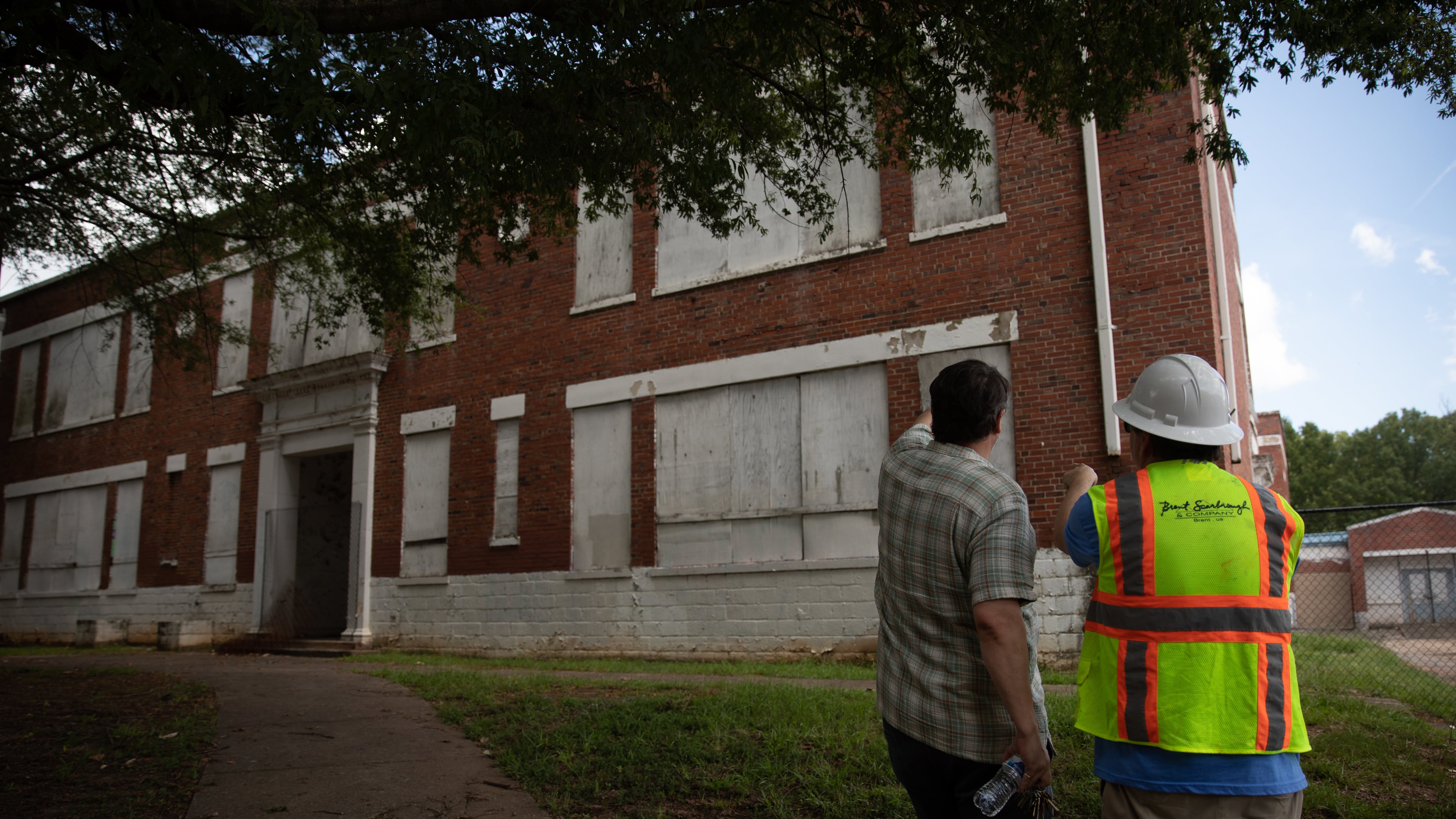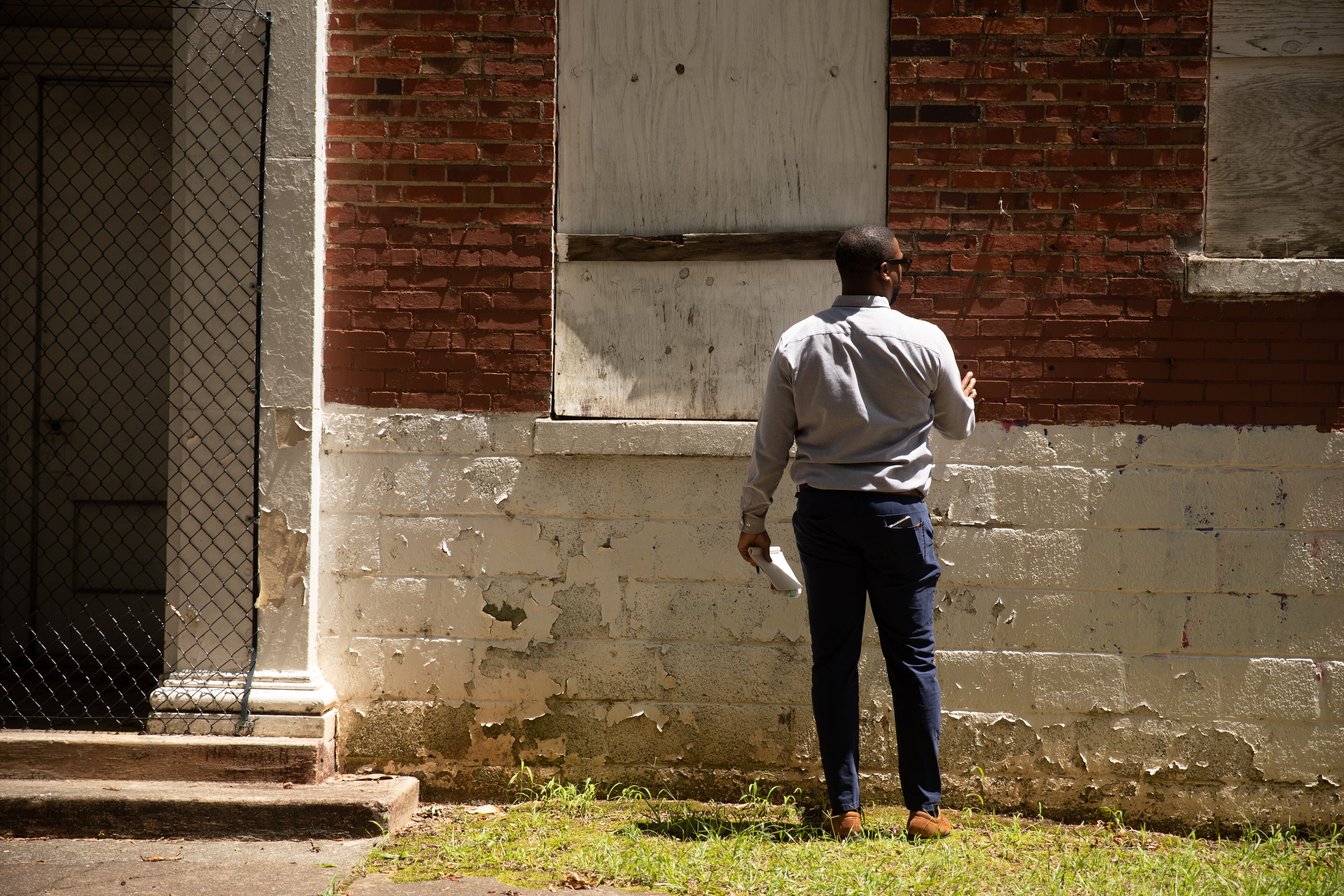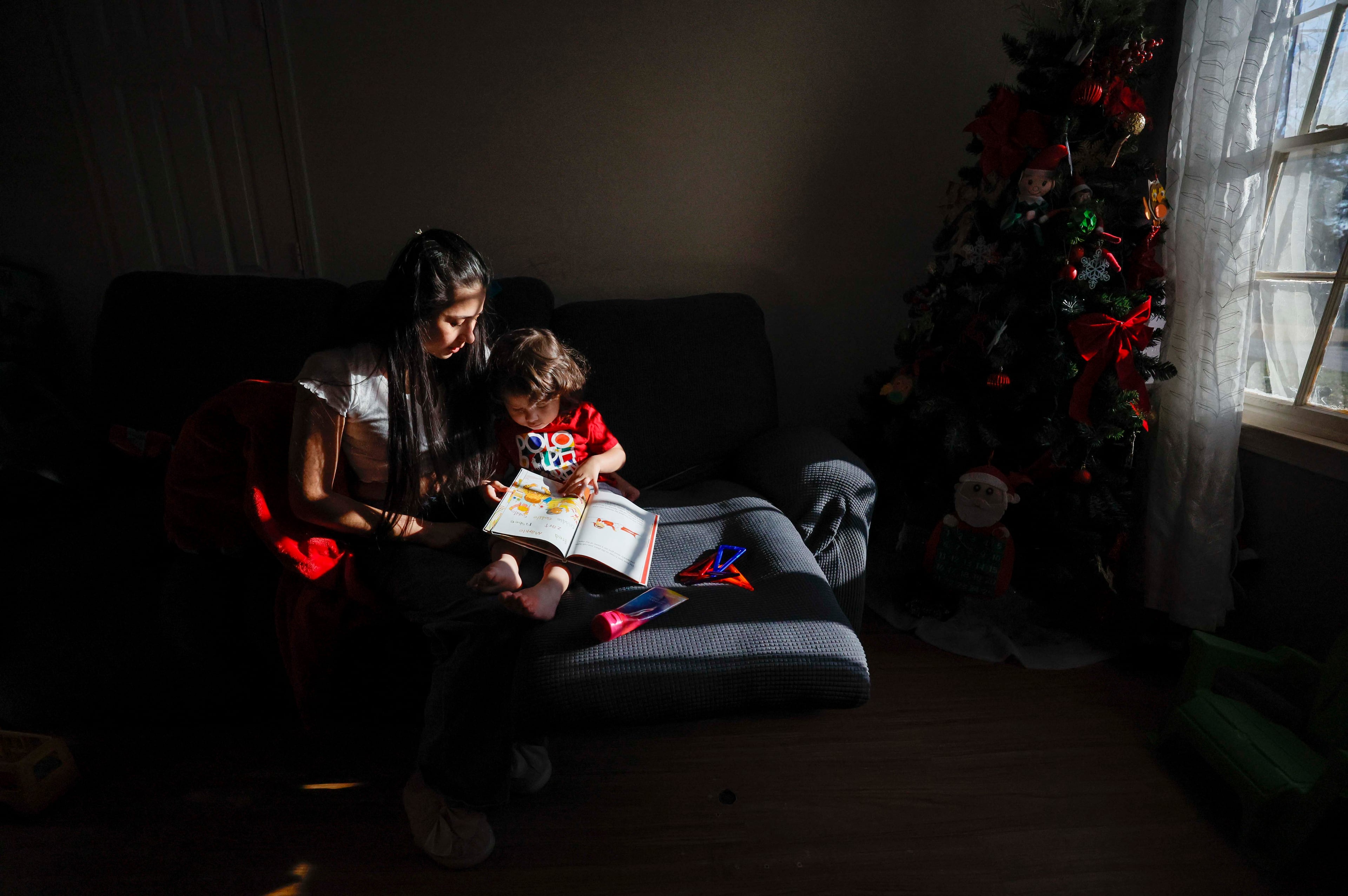Historic buildings are helping Atlanta reach affordable housing goals

The near century-old Lakewood Elementary School has sat vacant in south Atlanta for more than two decades. But on Wednesday, a group of developers interested in giving the property new life meandered around outside its dilapidated walls.
The two-story, Colonial Revival-style school is on track to be reimagined as a mixed-use space with 55 affordable housing units.
But preserving the original parts of the building — described as “imperative” by officials with Atlanta Public Schools, which owns the property — comes with a high price tag: an estimated $17 million to rehab all of the existing structures.
For David Bond, an architect with the Fitzgerald Collaborative Group who was among those on Wednesday’s tour, projects like this are about more than profit.
“It’s about what it could be for the community,” he said.
Historic buildings across the city are being redeveloped to help meet Atlanta Mayor Andre Dickens’ lofty goal of creating or preserving 20,000 units of affordable housing by 2030. So far, the city has reached 6,800 units with about 5,000 more in the works.
In 1936, General Motors workers quietly met in Lakewood Heights Elementary School classrooms to iron out the details of a pivotal demonstration that helped shape the country’s labor movement.
Their organizing sparked one of the first sit-down protests over poor working conditions at the Fischer Body plant on McDonough Boulevard. It marked an essential milestone for debate over worker’s rights during the mid-1900s.

The school ultimately closed its doors in 2003 and sat vacant for years as education officials toyed with the idea of demolishing or selling the property. Now, it’s one of eight “surplus” APS properties being revitalized into community hubs.
Other buildings on the list include the former Gilbert Elementary, Carey Elementary, Rosalie Wright Elementary and Harper Elementary schools.
“This is our first of eight properties that APS owns that we look to retain for many decades to come,” Daniel Drake, senior executive director of facility services for the school system, told developers. “But one of the things we’re trying to do while maintaining ownership is have affordable housing.”
The former Atlanta Constitution printing facility downtown, rebranded as the Folio House, is another long-vacant building that will hold around 200 affordable housing units.
“We’re not tearing the building down,” Dickens declared before lodging a sledgehammer into a symbolic wall that marked the beginning of the redevelopment of the old news hub. “We’re going to make sure that this stays historic and preserved.”
The properties play a key role in housing some of Atlanta’s most vulnerable residents as the city continues to grow, and housing prices remain high.
David Mitchell, executive director of the Atlanta Preservation Center, pointed to the use of the historic Odd Fellows Building tower — once a center for Black business and social life on Auburn Avenue — that was purchased by nonprofit Georgia Works to help house homeless residents.
“One of the challenges for historic preservation has always been when people say, ‘Well, (the building is) too far gone,’ or ‘We need something new,’” Mitchell said.
“But if you look at projects like Lakewood Elementary, the community is able to maintain something that has existed for decades — if not 100 years,” he said.

The vision for the elementary school revamp — spearheaded by APS and Atlanta Urban Development Corporation — includes both affordable housing units and retail space to help spur economic growth in the historic neighborhood.
The request for proposal that outlines the project for potential developers notes that preservation of the original 1932 portion of the school building is a critical element.
Mitchell said that preserving buildings that played important roles in the city’s history is well worth the extra cost.
“The housing market that we see now produces a lot of similarity,” he said. “Now buildings that have defined those neighborhoods, those communities and those districts for decades, now can influence what is being built.”
The Atlanta Constitution building at 143 Alabama St. SW, near the Five Points MARTA station, is another site that’s sat untouched since its last tenant, Georgia Power, moved out in the 1970s.
The 95,000-square-foot building was listed on the Georgia Trust for Historic Preservation’s 2024 “Places in Peril,” because of its Art Moderne architectural style, which is rare in Atlanta.
Trees sprout from the uncovered roof of the crumbling downtown newspaper building while graffiti covers its lower walls. Atlanta City Council member Jason Dozier said at a news conference last month that the property “has stood as a silent witness to our city’s evolution.”
Projects like this “bring preservation and progress together,” he said. “Demonstrating how our past can be a powerful foundation for an equitable and inclusive future.”
The property also plays into a larger vision for the future of downtown, as Atlanta’s first-term mayor pours resources into revitalizing the city’s core.
A long-standing plan to convert the former First National Bank of Atlanta — a 41-story high-rise at 2 Peachtree St. — into housing is still in the works not far away from the Constitution building.



